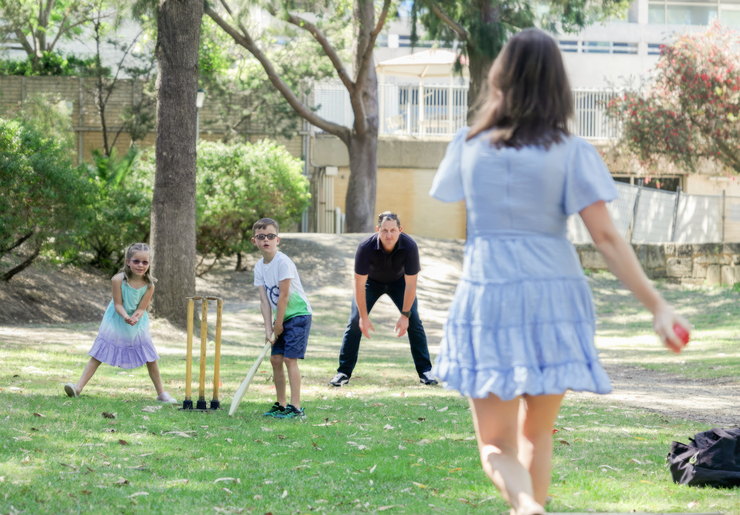Balancing outdoor playtime with protection from the harsh Australian sun may have major benefits for children's eye health, according to new research into myopia.
Researchers at Perth-based Lions Eye Institute have found that people who have had skin cancer are half as likely to be short-sighted.
And while for most people having myopia is an inconvenience that means needing to wear glasses or contact lenses, for those who have it from an early age it can be more serious – even leading to blindness.
"Our recommendation to Australian families is simple: increase the amount of time your kids spend outside, aiming for two hours a day, but follow SunSmart guidelines," lead researcher Professor David Mackey AO said.
"It is best to spend time outdoors early in the morning or late in the afternoon as, during the first and last three hours of daylight, the UV Index is below three throughout most of the year across Australia."
With the world experiencing a sharp rise in myopia rates, the Lions Eye Institute team is investigating eye growth and genetic factors in children to develop population-based measures for use in standard preschool health checks to predict which kids need early intervention to protect their sight.
"There's a global myopia epidemic," Prof Mackey said, ahead of World Sight Day 2024, which was observed on Thursday 10 October.
"In many cities in China, more than 90 percent of university students are living with myopia. Currently about six million Australians – or more than 20 percent of us – have myopia and we're heading for 50 percent by 2050."

Lions Eye Institute patient Angus Greeff, who has early onset myopia, plays cricket with his family
Prof Mackey said genetic predisposition to myopia was important in some children, along with lack of time spent outdoors, increased 'near work' to larger screens, and more time in education.
"We found that about 14 percent of young adults developed myopia between the ages of 20 and 28 years. We also found that looking at small screens didn't seem to have an effect. Neither did watching TV," he said of his team's recent paper.
"However, near work on larger computer screens did have an effect. So, we think that doing near work and reading books are doing the damage, exacerbated by children and adults spending less time outdoors in daylight and more time indoors for work or education."
Led by Prof Mackey and Dr Samantha Lee, researchers at the Institute – which provides private eye care across Western Australia – have identified a simple test to guide which children are treated for myopia at a very early stage.
Similar to recording height and weight during childhood, they propose routinely measuring children's axial length – from the front of the cornea to the back of the eye.
They hope it will be globally adopted as a standard preschool screening test.
"We need to identify children with severe myopia earlier in life so we can intervene and avoid a lifetime of challenging eye disease leading to blindness," Prof Mackey said.
"Some children will just have longer eyes, but if the axial length increases faster over time, that's a good predictor of future myopia."
Read more: Do mobile phones ruin your vision?
Read more: Celebrating 40 years of expanding vision
Next Safety And Quality:
28/10/2024 Quick test cuts post-surgery swelling risk
Previous Safety And Quality:
2/10/2024 Queensland-first skin cancer therapy
![[APHA]](/images/logo_apha.svg)
